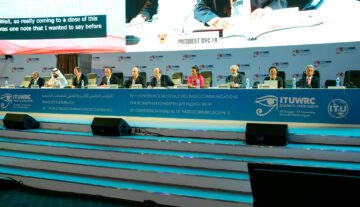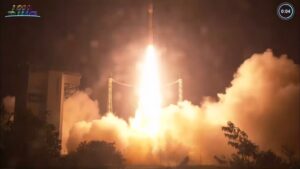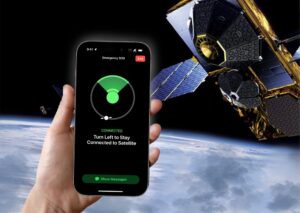The United Nations-run quadrennial conference wrapped up Dec. 15 after four grueling weeks of treaty-level negotiations, establishing new global rules for how radio spectrum bands — the lifeblood of communications — should be divvied up among competing interests.
Against the growing dominance of non-geostationary-orbiting constellations like the 5,200 and counting Starlink broadband satellites SpaceX has deployed in low Earth orbit since 2019, the conference had a strong space focus this time around.
WRC-23 resolutions included rules for keeping large non-geostationary orbit (NGSO) networks in check, including limits on how closely satellites must stick to the orbital positions they have registered with regulators.
Satellites in geostationary orbit (GSO) must stay within 0.5 degrees of an assigned orbital slot under long-standing rules governed by the International Telecommunication Union, the United Nations’ spectrum enforcer, but NGSO spacecraft did not have a similar limitation before WRC-23.
In addition, WRC-23 approved studies for the technical and regulatory provisions needed to protect radio astronomy from NGSO-caused interference. Measures to prevent NGSO services in countries that have not authorized them were also put on the agenda for WRC-27.
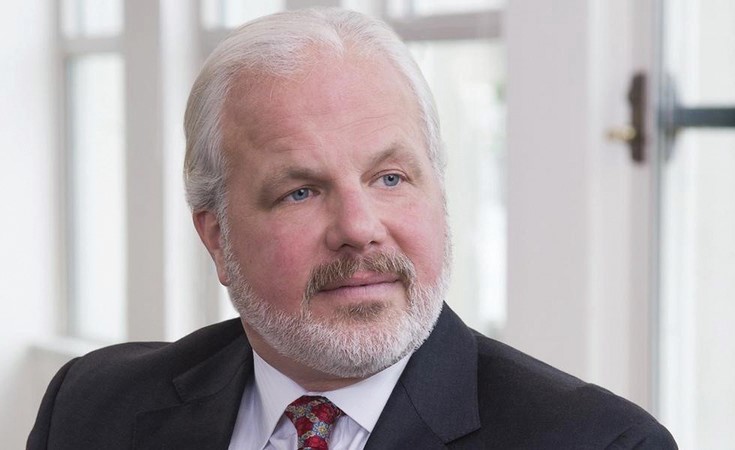
“One of the main risks that WRC-23 averted is that megaconstellation operators no longer will be able to expand their systems at the expense of everyone else,” said John Janka, global chief of government affairs and regulatory officer for GSO broadband provider Viasat.
While there were many pro-NGSO resolutions — such as a worldwide regulatory framework for providing NGSO Ka-band connectivity to planes, boats, and other terminals on the move — established GSO operators pointed to pushback against their competition at the conference.
“There was a broad anti-NGSO sentiment,” said Hazem Moakkit, vice president of spectrum strategy at GSO operator Intelsat, after returning from weeks of WRC-23 talks.
For Janka, GSO versus NGSO is a false narrative that draws attention away from what he sees as overconsumption of spectrum and orbits by a handful of megaconstellations — namely SpaceX, which plans to grow what is already the world’s largest constellation by six times.
Eutelsat of France operates the second-largest NGSO network with more than 630 OneWeb satellites.
Meanwhile, Amazon intends to start mass deployments this year for an NGSO constellation of more than 3,200 satellites.
GSO operators have a broader vantage point with satellites that are much farther away from Earth and need fewer of them to achieve global coverage. Viasat and Intelsat have around 70 satellites between them, but they must still share spectrum with the NGSO spacecraft flying below.
“No one bought the claims that megaconstellations from a few countries are more important than the countless national and regional satellite systems on which the rest of the world long has relied,” Janka said.
“Instead, there was a resounding recognition of the need to ensure equitable access to space and a clear signal that countries intend to protect their sovereign and national interests and ensure that the many space-based services on which they rely are not threatened and in fact are accommodated.”
NGSO players hail WRC-23 success
Amazon and other NGSO advocates see things very differently.
“I would say these outcomes at WRC23 for NGSOs were favorable,” said Julie Zoller, Project Kuiper’s head of global regulatory affairs.
She said orbital tolerance limits for NGSO satellites, for instance, were very generous.
Unlike GSO, NGSO satellites are not spread out across a single ring 35,786 kilometers directly above the equator to match the Earth’s rotation, and so their new position tolerances are based on how close they are to an approved altitude, rather than degrees of longitude along the geostationary arc.
WRC-23 put this limit at 70 kilometers above or below an assigned orbital slot while the rest of the NGSO constellation is being deployed, and 30 kilometers thereafter.
Project Kuiper’s planned and declared orbital tolerance is a maximum of nine kilometers above and below their assigned altitude.
Hybrid GSO and NGSO operator SES also disagreed that there was a general pushback against non-geostationary systems at the conference.
There is “value in agreeing on a solid basis for harmonized GSO and NGSO operations to foster a thriving and sustainable space environment,” SES director of spectrum management and development Anna Marklund said, and “we think WRC-23 accomplished this.”
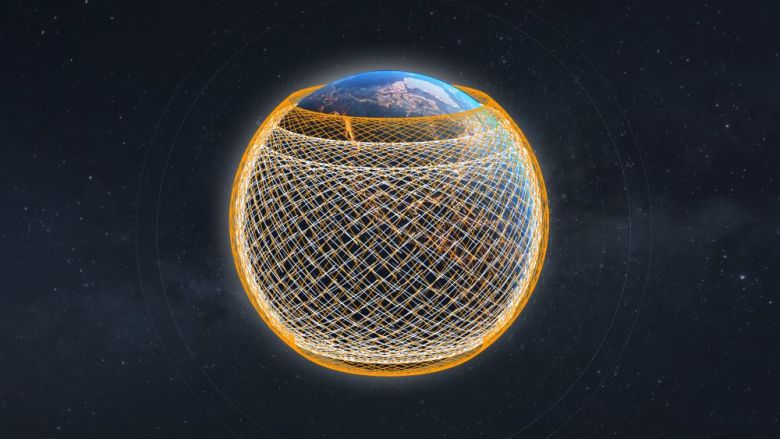
But the space industry’s most divisive WRC-23 issue by far was a proposal to review Equivalent Power Flux Density (EPFD) limits, affecting how strong NGSO signals should be to avoid disrupting geostationary satellites. The outcome of that depends on who you ask.
Regulatory text approved at WRC23 states that technical EPFD studies can be presented at WRC-27 without regulatory consequences.
For Viasat and other GSO operators concerned about the potential for interference, this means proposals for changing EPFD limits cannot be debated until the following conference in 2031.
However, others still see opportunities for EPFD changes as soon as WRC-27.
“The door has not closed,” Zoller said. “Having the results of studies reported to WRC-27 is not the same as an agenda item,” she added, “but, at every conference, administrations make the decisions on what they want to propose,” drawing from multiple inputs.
.One way EPFD changes could still end up on the WRC-27 agenda is if preliminary studies show a dire need for them, according to Katherine Gizinski, CEO of space consultancy firm River Advisers.
“It will certainly be interesting to see how the next four years play out,” Gizinski said.
SpaceX sent a letter to the Federal Communications Commission Dec. 14 to urge the U.S. regulator to “make clear the intention of WRC-23 that the radio regulations can be updated in 2027,” and to correct parties the company says are misrepresenting the record to delay updates.
The FCC was still reviewing the letter as of early January.
Even putting EPFD limits up for study risks curtailing GSO investments and innovation because it would destabilize a regulatory regime that has been in place for more than a decade, according to Janka of Viasat.
“The advancement of technology enables more efficient use of spectrum [and] enables more sharing,” Project Kuiper’s Zoller countered.
“How do you think we went from analog to digital TV? You can’t take that kind of approach and say everything has to stay the same forever [and] we can’t advance technology.”
Terrestrial frienemies
A push from representatives of the terrestrial telecoms market for access to more space frequencies was largely kept at bay, according to Gizinski of River Advisers, and the satellite sector obtained most of the protections it sought at WRC-23 in spectrum bands at risk.
“Going into the conference, there was great concern about the risks to [fixed satellite service] allocations,” she said, “which was addressed early and definitively.”
GSO and NGSO players noted growing acknowledgment among countries that network convergence and partnerships between terrestrial telcos and satellite operators are part of the new paradigm, which Gizinski said seems to have positively impacted the negotiations.

Jennifer Manner, senior vice president for regulatory affairs at GSO operator EchoStar Corp, highlighted increasing recognition of satellites’ role in extending terrestrial network coverage.
Multiple items were added to the agenda for WRC-27 that address a need for more frequencies to be allocated for satellite-based services, she said, in addition to allocations of terrestrial wireless spectrum to support connectivity from space directly to mass market devices.
Other space items on the agenda for 2027 include the allocation of radio frequencies for lunar communications.
Of the 20 items approved in Dubai for debate at WRC-27, 15 are related to space.
Of course, the risk that satellite operators could lose critical frequencies to terrestrial telcos hungry for more bandwidth on the ground still hangs over future conferences.
And with EPFD remaining a hot topic, there will likely also be plenty of space infighting at WRC-27 as NGSO newcomers stake their claims for the industry’s future direction.
“NGSO and GSO share the same bands in many cases, but GSO is considerably installed over decades while NGSO is coming to its prime,” said Elisabeth Neasmith, senior director for regulatory issues at GSO operator Telesat, which is moving into NGSO operations with the low-Earth-orbit Lightspeed constellation it aims to begin deploying in mid-2026.
“As sharing conditions get defined, fear of the unknown is replaced with education and experience, and the ‘new’ is no longer so new, the apparent friction should subside.”
This article first appeared in the January 2024 issue of SpaceNews magazine.
- SEO Powered Content & PR Distribution. Get Amplified Today.
- PlatoData.Network Vertical Generative Ai. Empower Yourself. Access Here.
- PlatoAiStream. Web3 Intelligence. Knowledge Amplified. Access Here.
- PlatoESG. Carbon, CleanTech, Energy, Environment, Solar, Waste Management. Access Here.
- PlatoHealth. Biotech and Clinical Trials Intelligence. Access Here.
- Source: https://spacenews.com/orbital-spectrum-clash/
- :has
- :is
- :not
- $UP
- 1
- 14
- 15%
- 20
- 200
- 2019
- 2024
- 2031
- 30
- 35%
- 70
- a
- Able
- About
- above
- access
- accomplished
- According
- Achieve
- across
- added
- addition
- address
- addressed
- Administrations
- advance
- advancement
- advocates
- Affairs
- affecting
- After
- against
- agenda
- agreeing
- aims
- allocated
- allocation
- allocations
- along
- already
- also
- Amazon
- among
- an
- and
- anna
- apparent
- appeared
- approach
- approved
- Arc
- ARE
- around
- article
- AS
- ask
- assigned
- astronomy
- At
- attention
- authorized
- avoid
- away
- Bandwidth
- based
- basis
- Bay
- BE
- because
- been
- before
- begin
- being
- below
- between
- bought
- broad
- broadband
- broader
- but
- by
- CAN
- cannot
- cases
- ceo
- certainly
- Changes
- changing
- check
- chief
- claims
- Clash
- clear
- Close
- closed
- closely
- coming
- commission
- Communications
- company
- competing
- competition
- Concern
- concerned
- conditions
- Conference
- conferences
- Connectivity
- Consequences
- consultancy
- Convergence
- Corp
- correct
- could
- counting
- countries
- course
- coverage
- critical
- debate
- dec
- decade
- decades
- decisions
- defined
- delay
- density
- depends
- deployed
- deploying
- deployments
- Development
- Devices
- DID
- differently
- digital
- dire
- direction
- directly
- Director
- do
- Dominance
- Door
- drawing
- draws
- Dubai
- Early
- earth
- Education
- efficient
- else
- enables
- end
- ensure
- Environment
- equitable
- Equivalent
- established
- establishing
- Every
- everyone
- everything
- Expand
- experience
- extending
- fact
- false
- far
- favorable
- FCC
- fear
- Federal
- Federal Communications Commission
- few
- fewer
- Firm
- First
- fixed
- FLUX
- flying
- Focus
- following
- For
- forever
- Foster
- four
- Framework
- France
- friction
- from
- future
- General
- generous
- get
- Global
- governed
- Government
- great
- Ground
- Grow
- Growing
- had
- handful
- hangs
- Have
- he
- head
- Highlighted
- HOT
- How
- HTTPS
- Hungry
- if
- impacted
- important
- in
- include
- included
- Including
- increasing
- industry’s
- Innovation
- inputs
- instance
- intend
- intends
- Intention
- interesting
- interests
- interference
- International
- International Telecommunication Union
- into
- Investments
- issue
- issues
- IT
- items
- ITS
- January
- Jennifer
- John
- jpg
- keeping
- kept
- Kind
- large
- largely
- largest
- Latency
- letter
- lifeblood
- lightspeed
- like
- likely
- LIMIT
- limitation
- limits
- links
- Long
- long-standing
- longer
- lose
- Low
- Lunar
- magazine
- Main
- make
- management
- manner
- many
- Market
- Mass
- Match
- max-width
- maximum
- means
- measures
- more
- more efficient
- most
- move
- moving
- much
- multiple
- must
- namely
- NARRATIVE
- National
- Need
- needed
- negotiations
- network
- networks
- New
- newcomers
- next
- nine
- no
- noted
- obtained
- of
- Officer
- on
- ONE
- operates
- Operations
- operator
- operators
- opportunities
- or
- Orbit
- Other
- Others
- out
- Outcome
- outcomes
- over
- paradigm
- part
- parties
- partnerships
- Place
- Planes
- planned
- plans
- plato
- Plato Data Intelligence
- PlatoData
- Play
- players
- Plenty
- Point
- position
- positions
- positively
- potential
- power
- preliminary
- presented
- president
- prevent
- Prime
- project
- proposal
- Proposals
- propose
- proposed
- protect
- provider
- providing
- Push
- put
- Putting
- Radio
- rather
- recognition
- record
- reduce
- regime
- regional
- registered
- regulations
- regulator
- Regulators
- regulatory
- related
- rely
- remaining
- replaced
- Reported
- Representatives
- resounding
- REST
- Results
- returning
- review
- reviewing
- Ring
- Risk
- risks
- River
- Role
- rules
- s
- Said
- same
- satellite
- satellites
- say
- says
- second-largest
- sector
- see
- seems
- sees
- senior
- sent
- sentiment
- service
- Services
- Share
- sharing
- she
- should
- show
- Signal
- signals
- similar
- since
- single
- SIX
- slot
- So
- solid
- Soon
- sought
- sovereign
- Space
- space-based
- spacecraft
- SpaceNews
- SpaceX
- Spectrum
- spread
- stake
- starlink
- start
- States
- stay
- Stick
- Still
- Strategy
- strong
- studies
- Study
- success
- such
- support
- sustainable
- Systems
- Take
- Talks
- Technical
- Technology
- telecommunication
- telecoms
- terminals
- terrestrial
- text
- than
- that
- The
- the world
- their
- Them
- There.
- These
- they
- things
- think
- this
- this year
- thriving
- time
- times
- to
- tolerance
- topic
- tv
- u.s.
- under
- union
- United
- unknown
- until
- updated
- Updates
- use
- used
- vantage
- vantage point
- Versus
- very
- vice
- Vice President
- want
- was
- waves
- Way..
- we
- Weeks
- went
- were
- What
- What is
- which
- while
- WHO
- will
- wireless
- with
- within
- without
- world
- world’s
- worldwide
- would
- Wrapped
- year
- years
- you
- zephyrnet


